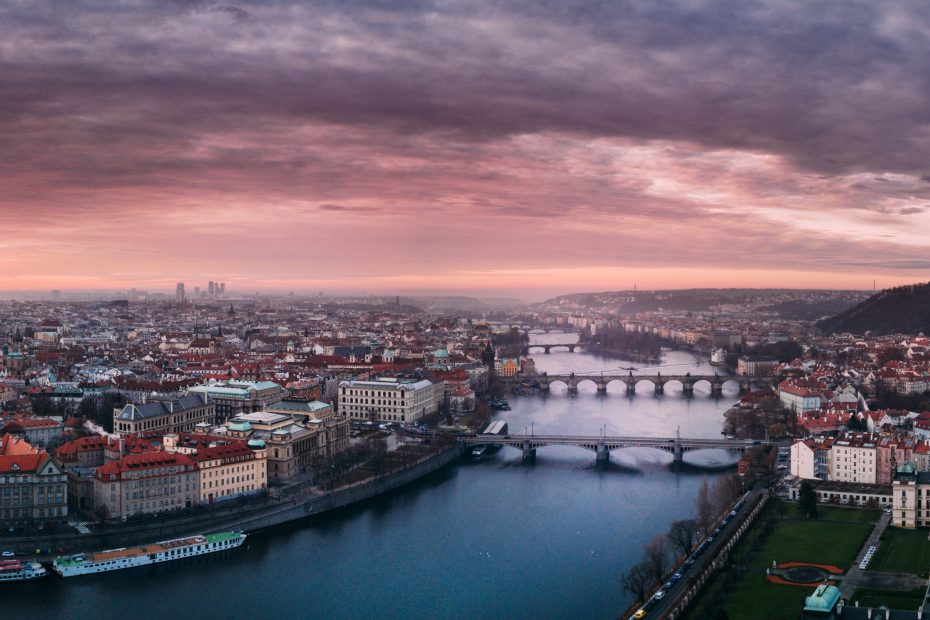Table of Contents
Introduction
Nestled in the eastern part of the Czech Republic, Moravia has a long history and culture distinct from Bohemia. Beyond the cosmopolitan draws of Prague lie the captivating mysteries of uniquely Moravian folklore and traditions. From the rolling hills dotted with vineyards to the rural villages lost in time, Moravia is a fascinating region to uncover.
History and Culture of Moravia
Geographically, Moravia borders Bohemia, Slovakia, Poland, and Austria. Historically the Margraviate of Moravia, it was absorbed into the Czech state in 1918. The Moravians have Slavo-Germanic origins and a dialect that differs from standard Czech. Known for its rural landscapes, Moravia has a culture more deeply rooted in Slavic and Eastern European influences than Bohemia. The small villages focused on agriculture, winemaking, and folk crafts, nurturing charming traditions over centuries of relative isolation.
Moravian Folk Costumes
Traditional Moravian folk costumes reveal much about the region’s heritage. Women’s dress often features rich brocade, aprons, lace headdresses, and embroidered blouses representative of various districts. Men’s attire includes woolen suits, vests, boots, and hats like the round “kovbojka.” Intricate embroidery, colorful ribbons, and silver pins contain symbolic meaning. Passed down for generations and worn for festivals, the costumes embody Moravian craftsmanship and identity.
Moravian Folk Music and Dance
Music is integral to Moravian culture, with unique instruments and rhythms rooted in the countryside. Violins, dulcimers, bagpipes, and flutes create a distinct soundscape. Verbuňk is an acrobatic men’s solo dance performed at festivals. Cimbalom bands with hammered dulcimers are iconic ensembles. Folk songs have a specific Moravian melodic style. Keeping these traditions alive, music and dance groups perform in traditional dress at local events and concerts worldwide.
Moravian Easter Traditions
Easter in Moravia brims with remarkable rituals. Boys gather willow branches to gently whip girls on Easter Monday, a flirtatious fertility tradition. Intricately hand-decorated eggs called pysanky feature elaborate geometric designs. On Easter Sunday, festive processions on decorated horses parade through villages. Girls in folk costumes braid the manes with ribbons and sing traditional songs. These unique traditions reflect the deep Moravian ties to nature, agriculture, and cultural heritage.
Wine Culture
Winemaking has thrived for centuries in Moravia’s fertile valleys. Local white grape varieties like Grüner Veltliner yield excellent wines. Vinobraní festivals celebrating the annual harvest bring communities together. Rustic wine cellars carved under villages open for tastings. At local taverns, wine flows freely with music, dancing, and camaraderie. Moravia’s wine culture fosters local pride and brings vibrant life to the countryside through active growing, production, and traditions.
Moravian Countryside and Architecture
Charming rural villages scattered throughout the Moravian landscape seem untouched by modernity. Traditional Slavic timbered houses, often painted vivid colors, have steeply angled roofs. Intricately decorated folk architecture fuses Baroque and Renaissance influences. Peaceful countryside vistas contain fruit orchards, vineyards, and fieldslinked by winding lanes. Sites like the Lidice Memorial and its haunting history provide compelling sights. The preserved Moravian countryside offers glimpses into an ageless pastoral world.
Contemporary Efforts to Preserve Folklore
Dedicated cultural organizations work actively to preserve Moravian folklore against the encroaching tides of globalization. From museums to festivals to educational initiatives, opportunities abound for locals and visitors to engage with traditions. Music and dance groups practice tirelessly, transmitting knowledge to new generations. With commitment from communities, Moravia’s living heritage persists, still thriving in the hands of passionate practitioners.
Conclusion
Beyond the urban pulse of Prague, Moravia’s folklore offers an enchanting look at rural traditions and Slavic culture. Through vibrant costumes, music, dance, Easter rituals, winemaking, and classic architecture, centuries-old Moravian identity continues to be proudly celebrated. As the alluring mysteries of the Moravian countryside are uncovered, the importance of preserving this heritage for the future becomes clear. Moravia’s folklore tells a compelling story of a people deeply connected to the land, community, and their cultural roots.
FAQs
What makes Moravian culture distinct from Bohemian culture?
Moravian culture differs from Bohemian culture in its more Slavic and Eastern European influences. Moravia has different dialects, music, architecture, and traditions compared to Bohemia which was more heavily influenced by Germanic culture.
What are some of the traditional Moravian folk costumes?
Some key elements of Moravian folk costumes include richly embroidered blouses, lace headdresses, aprons, and colorful ribbons. Men wear wool suits, vests, boots, and unique hats. The costumes vary by region and contain intricate symbols and detailing.
What types of folk music and dance originate from Moravia?
Moravian folk music utilizes violins, bagpipes, dulcimers, and other instruments for a unique sound. Dances include the energetic verbuňk men’s solo and performances by cimbalom bands. Moravian songs have a distinct melodic style and lyrics.
How do Moravians celebrate Easter differently?
Moravian Easter traditions include boys whipping girls with willow branches, girls braiding horses’ manes and singing in processions, and decorating eggs called pysanky with elaborate designs.
What is the vinobraní festival?
Vinobraní is an annual harvest festival celebrating Moravia’s winemaking tradition. Locals gather for wine tastings, music, dancing, and other events that honor the grape harvest and wine production.
